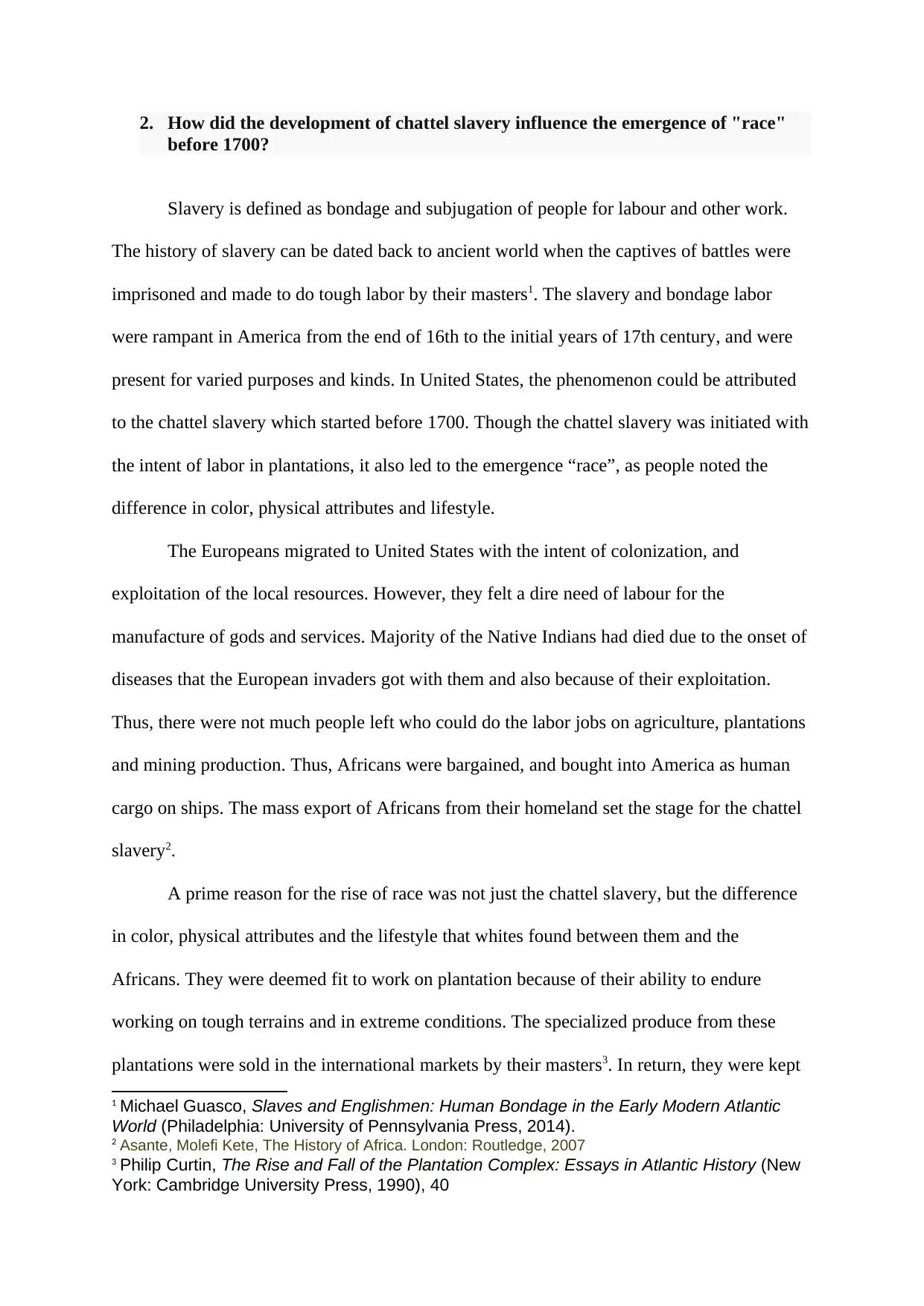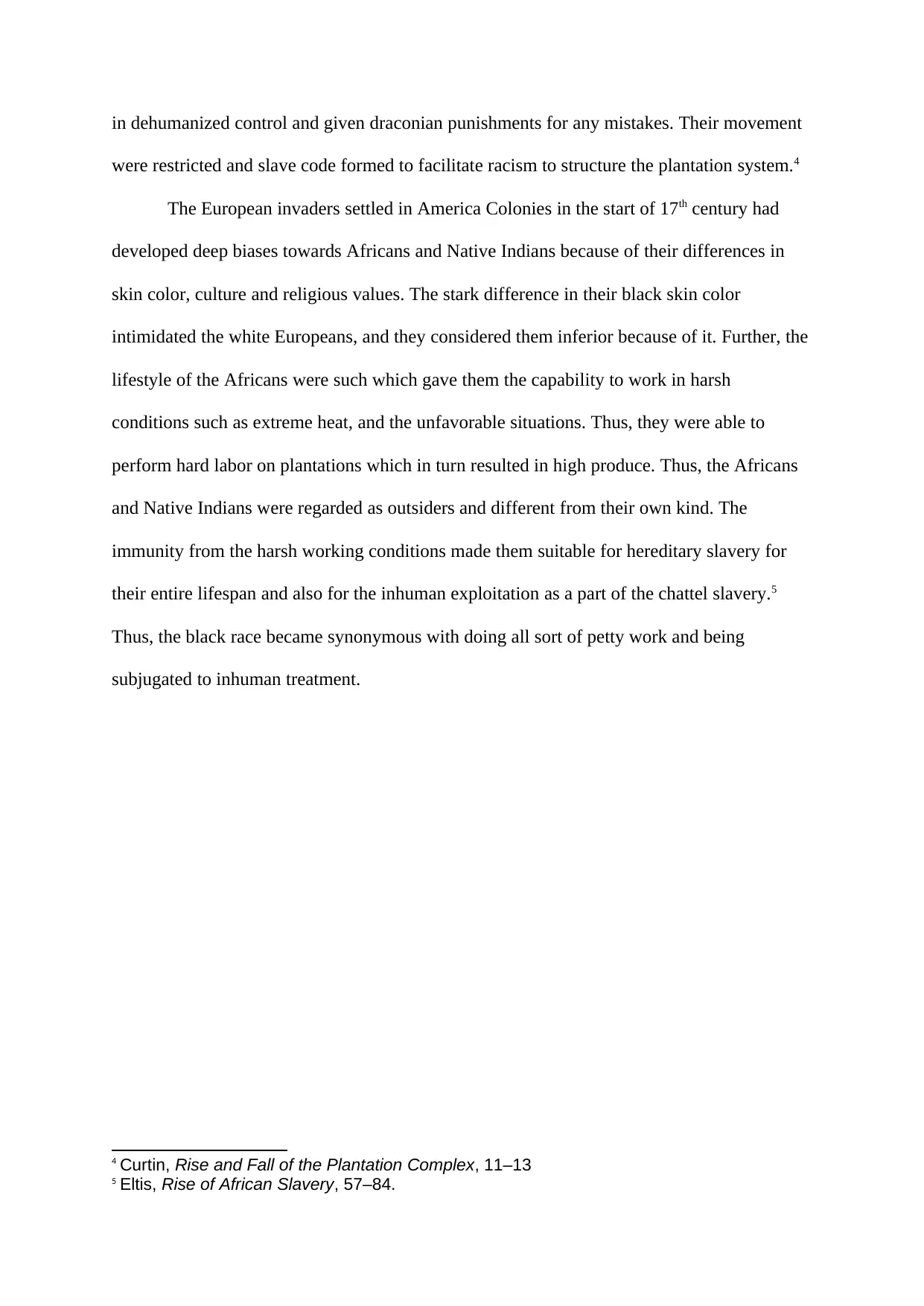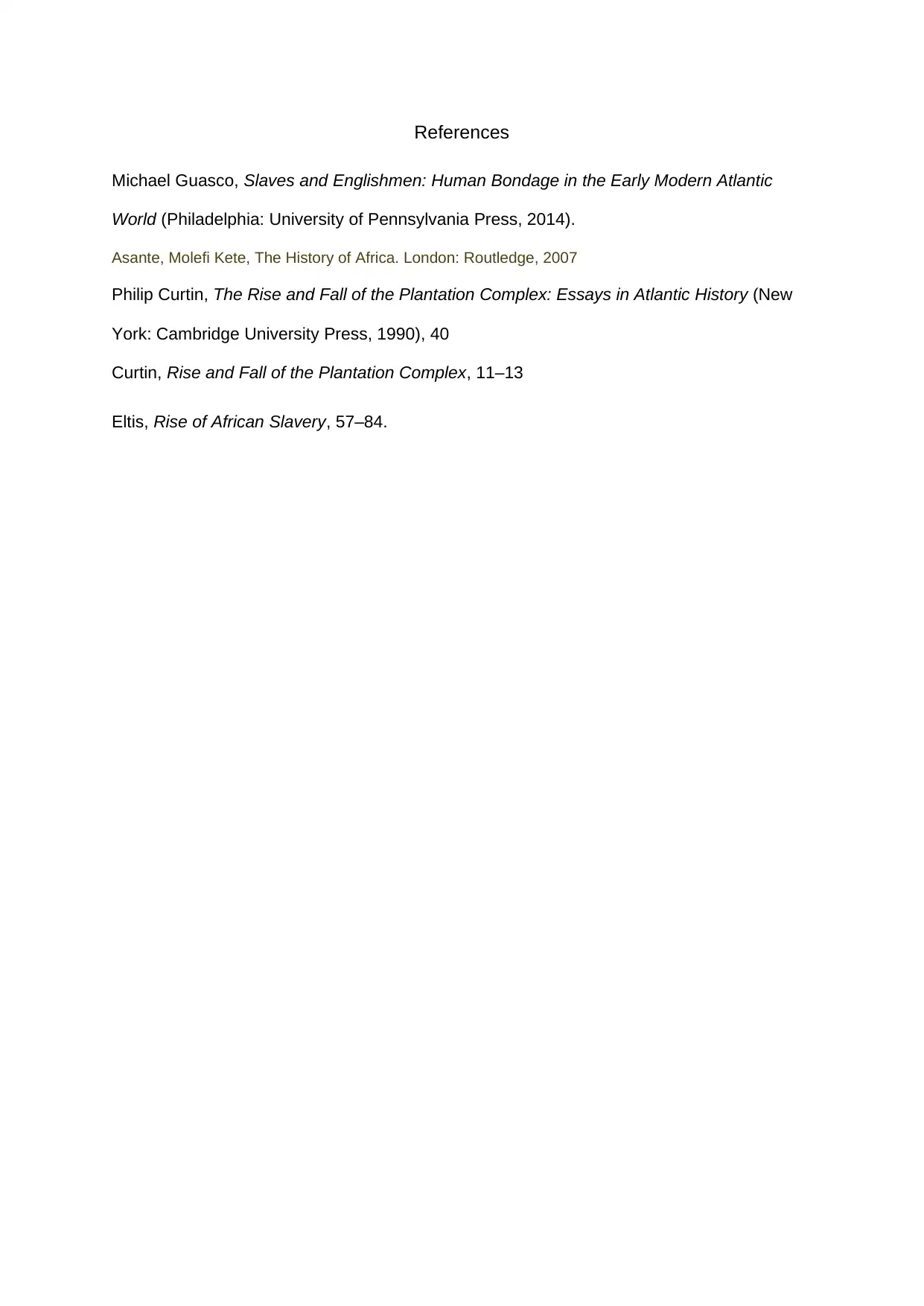Before 1700: How Chattel Slavery Shaped the Concept of Race
VerifiedAdded on 2023/04/20
|3
|730
|432
Essay
AI Summary
This essay examines the influence of chattel slavery on the emergence of "race" before 1700. It argues that while slavery existed in the ancient world, the specific form of chattel slavery in America, driven by the need for labor in plantations, played a significant role in shaping racial perceptions. The essay discusses how European colonists developed biases towards Africans and Native Indians due to differences in skin color, culture, and religious values. Africans were seen as fit for harsh labor due to their ability to endure extreme conditions, leading to their dehumanization and the creation of slave codes that facilitated racism. The essay concludes that the association of black skin with servitude and inhuman treatment solidified the concept of race during this period. Desklib offers a wealth of resources, including past papers and solved assignments, to aid students in their studies.
1 out of 3








![[object Object]](/_next/static/media/star-bottom.7253800d.svg)